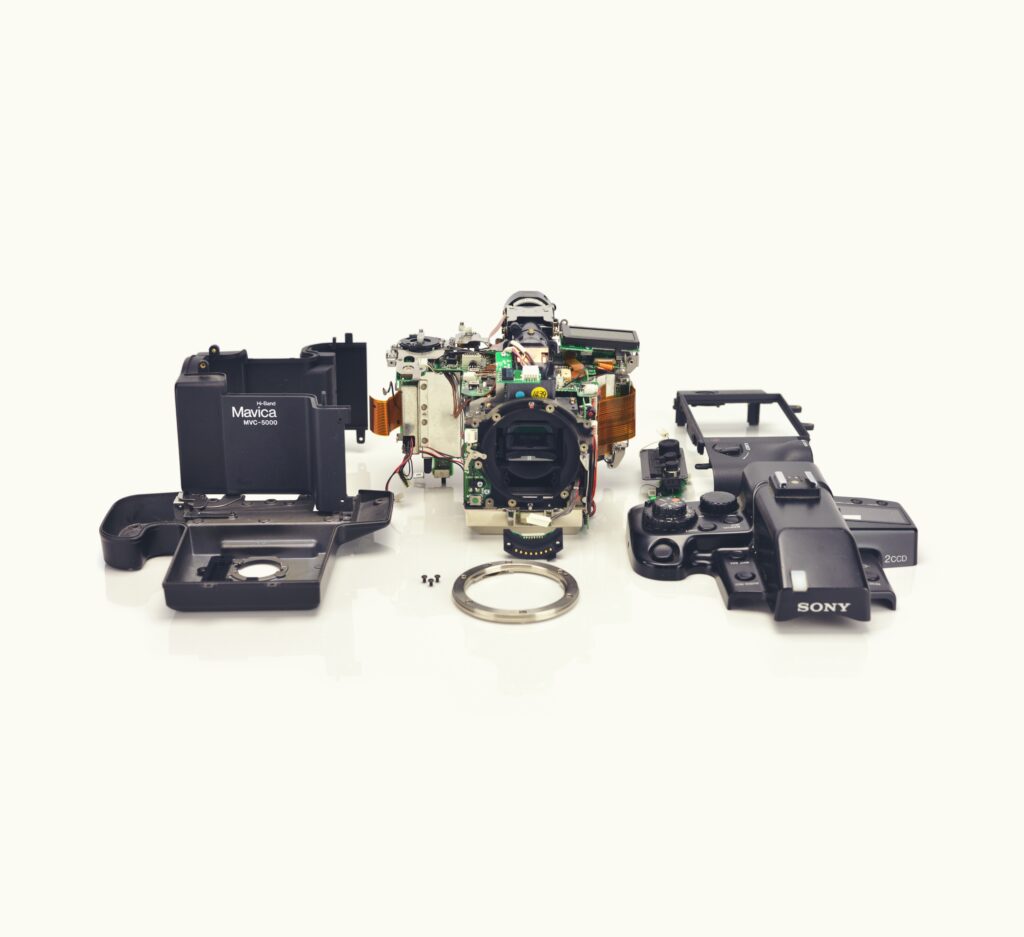In this article, you will discover the simple steps to replace an exhaust hanger, saving you time and money. Whether you’re a seasoned car enthusiast or a novice DIYer, we’ve got you covered. With our easy-to-follow instructions and helpful tips, you’ll be able to tackle this task with confidence. So, let’s get started on fixing that pesky exhaust hanger and get your vehicle back on the road in no time!
Understanding Exhaust Hangers
Exhaust hangers are an essential component of a vehicle’s exhaust system. These hangers are responsible for supporting and securing the exhaust system, ensuring it stays in place while the vehicle is in motion. They play a crucial role in preventing excessive vibrations and reducing the stress on the exhaust pipes. Without properly functioning exhaust hangers, the exhaust system may become loose or hang too low, resulting in potential damage to the system and the vehicle itself.
Importance of Exhaust Hangers in a Vehicle
Exhaust hangers are not just a small detail in a vehicle’s exhaust system; they serve a vital purpose. Properly functioning exhaust hangers help maintain the integrity and stability of the exhaust system. They keep the various components securely in place, preventing excessive movements and reducing the risk of damage or wear. Additionally, exhaust hangers contribute to a smooth and quiet ride by minimizing vibrations and ensuring the exhaust system does not come into contact with other parts of the vehicle.

Signs of a Failing or Damaged Exhaust Hanger
Knowing the signs of a failing or damaged exhaust hanger is crucial in maintaining the health of your vehicle’s exhaust system. Here are a few indicators to watch out for:
-
Excessive Vibrations: If you feel unusual vibrations while driving, especially when accelerating or idling, it may be a sign of a failing exhaust hanger. These vibrations can be felt through the steering wheel, pedals, or the entire vehicle.
-
Hanging or Low Exhaust: If you notice that your exhaust system hangs lower than usual or is not properly aligned, it could indicate a damaged exhaust hanger. The exhaust may visibly hang lower or be misaligned, potentially leading to contact with the ground or other parts of the vehicle.
-
Rattling or Clunking Noises: A damaged exhaust hanger can cause the exhaust system to rattle or produce clunking noises, especially when the vehicle is in motion or going over bumps. These noises are often a result of the exhaust pipes hitting against the undercarriage or other components.
-
Exhaust Leak: A failing exhaust hanger can cause gaps or misalignments in the exhaust system, leading to the potential for exhaust leaks. If you notice an increase in exhaust fumes or a strong smell of gasoline, it may be a sign of a damaged hanger.
Tools and Materials Needed
Before replacing an exhaust hanger, it is important to gather the necessary tools and materials to ensure a smooth and successful installation. Here are the items you’ll need:
Various Types of Wrenches
Having a selection of wrenches, including adjustable wrenches and socket wrenches, will allow you to tackle and remove different sized bolts and nuts that may be securing the exhaust hanger.
Replacement Exhaust Hanger
Obtaining a replacement exhaust hanger specific to your vehicle’s make and model is crucial. Ensure that the hanger matches the old one in terms of shape, size, and mounting points.
Protective Gloves
Investing in a pair of protective gloves will not only keep your hands clean but also protect them from potential cuts or injuries while working underneath the vehicle.
Safety Glasses
Wearing safety glasses is essential to shield your eyes from any debris or particles that may fall while removing or installing the exhaust hanger.
Vehicle Jacks or Ramps
To access the underside of the vehicle safely, you’ll need either vehicle jacks or ramps. These will elevate the vehicle and provide sufficient clearance for you to work comfortably.

Safety Precautions
When working with vehicles, prioritizing safety is of utmost importance. Before proceeding with any work, here are some safety precautions to keep in mind:
Wearing Protective Gear
Ensure you are wearing protective gloves and safety glasses to minimize the risk of injury while working on the exhaust hanger.
Securing the Vehicle on a Level Surface
Before raising the vehicle with jacks or driving it onto ramps, make sure that the surface is level and stable. This will help prevent the vehicle from rolling or shifting unexpectedly during the replacement process.
Ensuring the Vehicle is Cool Before Working on It
Exhaust components can become extremely hot during operation. To prevent burns or injuries, allow the vehicle’s exhaust system to cool down completely before attempting to replace the exhaust hanger.
Identifying the Damaged Exhaust Hanger
To replace an exhaust hanger, it is essential to identify the specific hanger that is causing the issue. Here’s how you can go about identifying the damaged exhaust hanger:
Inspecting the Vehicle Underbody
Using jacks or ramps, safely elevate the vehicle to gain access to the exhaust system. Once underneath the vehicle, visually inspect the exhaust pipes, muffler, and other components for any visible signs of damage or wear. Look for any loose or hanging components that indicate a failing exhaust hanger.
Isolating the Damaged Hanger
Once you’ve identified the general area where the damaged hanger is located, conduct a closer inspection to pinpoint the specific hanger causing the issue. Look for signs of corrosion, cracks, or damage to the hanger itself, as well as any signs of it separating or detaching from the exhaust system.
Checking for Additional Hanger Issues
While inspecting the damaged hanger, take the opportunity to check the condition of the other exhaust hangers as well. Look for any signs of damage, wear, or misalignment. Replacing multiple hangers simultaneously can help ensure the longevity and stability of the entire exhaust system.

Removing the Old Exhaust Hanger
With the damaged hanger identified, it’s time to remove it and prepare for the installation of the new hanger. Here are the steps to follow:
Locating and Unhinging the Old Exhaust Hanger
Using the appropriate wrench, carefully loosen and remove the bolts or nuts that are securing the old exhaust hanger to the vehicle’s underbody. Take caution not to damage the surrounding components or the exhaust pipes during this process.
Dealing with Rusted or Stuck Bolts
If you encounter rusted or stuck bolts while removing the old exhaust hanger, you may need to apply rust penetrant to loosen them. Allow the penetrant to soak in for the recommended amount of time, and then gently try to loosen the bolts using the wrench. If necessary, use additional force gradually to avoid damaging the surrounding parts.
Handling the Exhaust Pipe Carefully
While removing the old exhaust hanger, pay close attention to the exhaust pipe’s movement and position. Support the exhaust pipe with one hand to prevent it from falling or potentially causing damage. If needed, ask for assistance to ensure proper handling of the exhaust pipe during this process.
Comparing the Old and New Hanger
Before installing the new exhaust hanger, it is crucial to compare it with the old hanger to ensure a proper fit and compatibility. Follow these steps:
Making Sure the New Hanger Matches the Old One
Carefully compare the new exhaust hanger with the old hanger. Verify that they have the same shape, size, and mounting points. A mismatched hanger may not install correctly and could lead to further issues or damage in the future.
Checking the Shape and Size of the Hanger
Inspect the new hanger closely, ensuring its shape and size perfectly match the old hanger. Look for any differences or inconsistencies in design that may suggest incompatibility with your vehicle’s exhaust system.
Ensuring its Suitability for Your Vehicle Model
Refer to the manufacturer’s instructions or consult a professional to confirm that the new exhaust hanger is suitable for your specific vehicle make and model. It’s important to invest in a high-quality replacement hanger to ensure optimal performance and longevity.
Installing the New Exhaust Hanger
With the old exhaust hanger removed and the new hanger ready for installation, follow these steps to ensure a proper fit and secure attachment:
Positioning the New Hanger
Align the new exhaust hanger with the mounting points on the vehicle’s underbody. Ensure it is positioned correctly and correctly oriented to match the exhaust system. Take care not to force or bend the hanger during installation.
Securing it on the Exhaust System
Using the appropriate wrench, tighten the bolts or nuts that secure the new exhaust hanger to the mounting points. Start by lightly tightening them and then gradually increase the torque until the hanger is securely fastened. Avoid over-tightening, as it can lead to unnecessary stress on the exhaust system.
Double-Checking the Installation
After securing the new exhaust hanger, perform a thorough visual inspection. Ensure that the hanger is properly aligned, keeping the exhaust system securely in place. Give the exhaust system a gentle shake to confirm there are no loose connections or excessive movements. If everything appears to be in order, lower the vehicle back to the ground.
Potential Problems and Troubleshooting
While replacing an exhaust hanger is generally a straightforward process, there are a few potential problems that may arise. Here’s how to address them:
Addressing Over-Tightened Hangers
If you accidentally over-tightened the bolts or nuts, you may encounter issues such as distortion or damage to the hanger or other components. To resolve this, use the appropriate wrench to loosen the bolts slightly until the hanger and surrounding parts regain their proper position and alignment. Then, carefully tighten the bolts to the appropriate torque.
Dealing with Incorrectly Sized or Shaped Hangers
If you discover that the replacement exhaust hanger does not fit properly or is incompatible with your vehicle’s exhaust system, you may need to obtain a new hanger specific to your vehicle make and model. Double-check the manufacturer’s information or consult a professional to ensure you have the correct hanger for your vehicle.
Handling Hangers That Make Noise or Move Too Much
If the new hanger is making noise or causing excessive movements, it may not be properly secured or aligned. Carefully inspect the hanger and surrounding components for any signs of misalignment or loose connections. Adjust and tighten the hanger’s bolts or nuts as necessary to eliminate any unwanted noise or movements.
By following these steps and guidelines, you can successfully replace a damaged or failing exhaust hanger in your vehicle. Remember to prioritize safety and consult a professional if uncertain or uncomfortable performing the task yourself. Keeping your exhaust system properly supported and secured will ensure a smoother ride, reduce potential damage, and help maintain the overall health of your vehicle.
